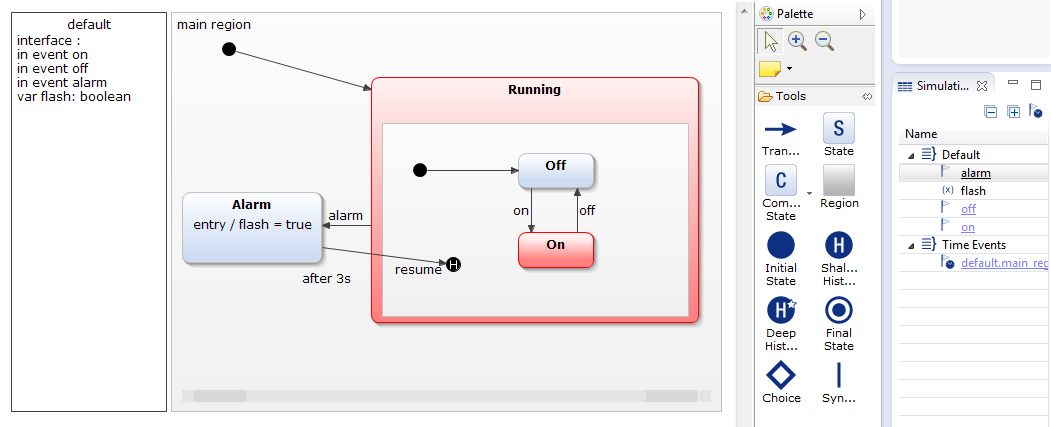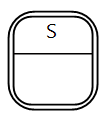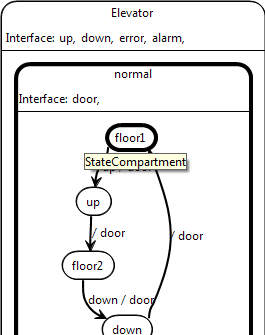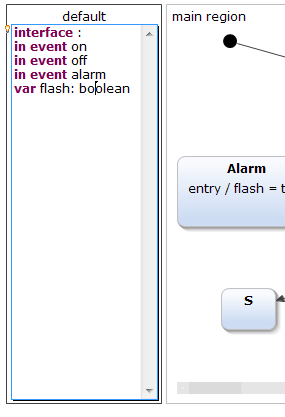Yakindu SCT
YAKINDU Statechart Tools (SCT) is an open source tool for the specification and development of reactive, event-based systems using state machines (Yakindu SCT User Guide).
YAKINDU SCT consists of a graphical tool for editing and provides validation, simulation, and code generators for different target platforms. The tools are provided as Eclipse-plugins and integrate tightly into the IDE (Yakindu SCT Website).
Yakindu SCT Editor VS KIELER SyncCharts Editor
| KIELER | YAKINDU | ||
|---|---|---|---|
| Transition | YAKINDU: There is only one type for transitions KIELER: Strong Abort, Week Abort, Normal Termination | ||
| State | |||
| Composite State | |||
| Initial State | YAKINDU: Initials State are pseudo states. The Initial State may not be a Composite State. An initial state can only have one outgoing transition and no incoming. KIELER: Initial states are supposed to have a thicker border than normal states | ||
| Final State | YAKINDU: Final States are pseudo states. The Final State may not be a Composite State KIELER: Final states are depicted with a double border | ||
| History | YAKINDU:
KIELER: A History is a attribute of a Transition | ||
| Synchronization | |||
| Choice |
| KIELER | YAKINDU | |
|---|---|---|
| Interface declaration |
Yakindu SCT module structure
Customizing Yakindu SCT Editor to SyncCharts
Two steps are required to adapt the Yakindu SCT Editor to the SyncCharts syntax:
- adapting the graphical representation (sgraph)
- extending or replacing the textual description language (stext)
Adapting the graphical representation
To adapt the graphical representation, several steps are required:
- adapting the Metamodel for the graphical represenation of the state machine models (org.yakindu.sct.model.sgraph)
- Figures (org.yakindu.sct.ui.editor.editor.figures)
- Editparts (org.yakindu.sct.ui.editor.editparts)
- Propertysheets (org.yakindu.sct.ui.editor.propertysheets)
- The palette (org.yakindu.sct.ui.editor/plugin.xml)
- adapting the Metamodel for the graphical represenation of the state machine models (org.yakindu.sct.model.sgraph)
Example: How to modify Initial and Finial States in Yakindu SCT Editor
Extending or replacing the textual description language
The textual description language is used to declare and describe behaviors in the state machine. It is case sensitive.




















